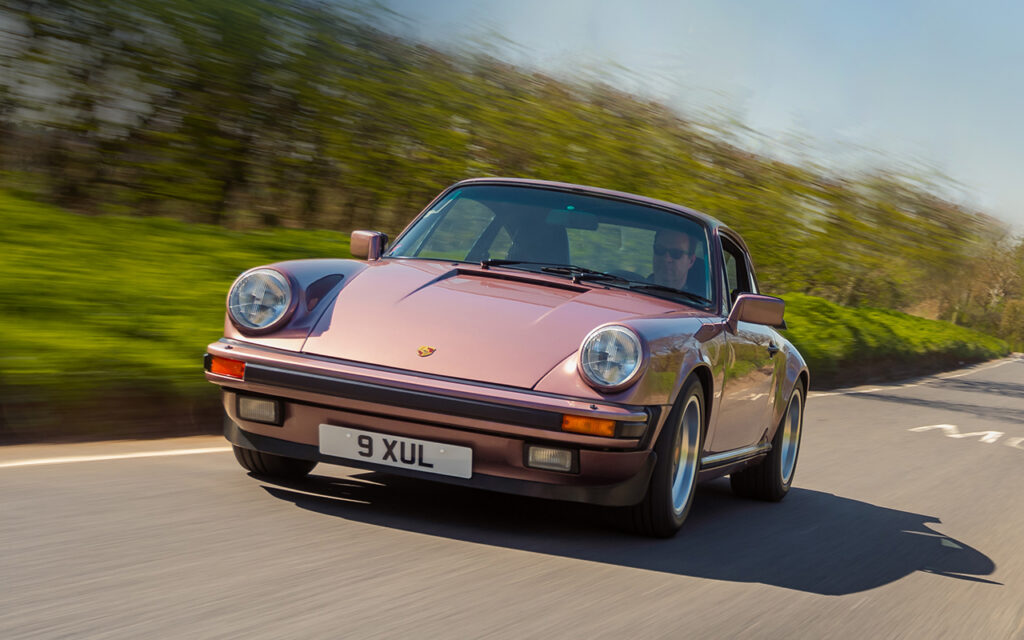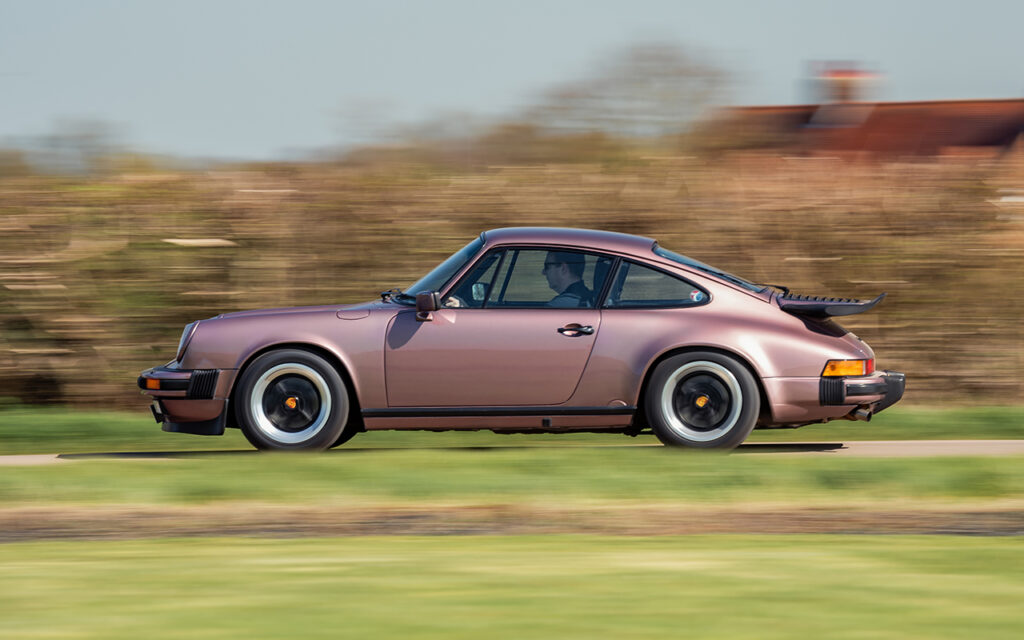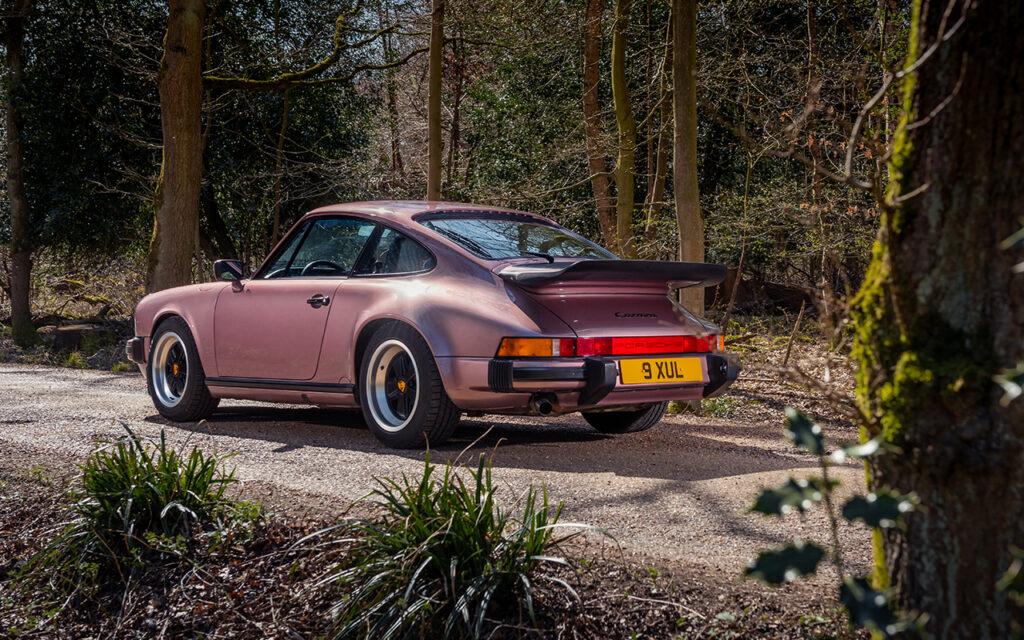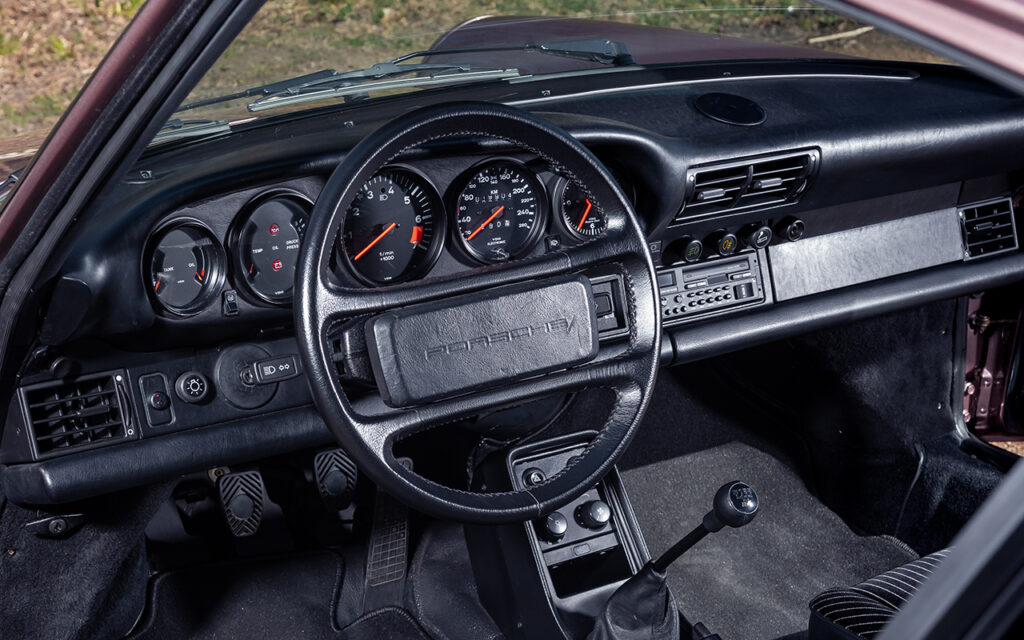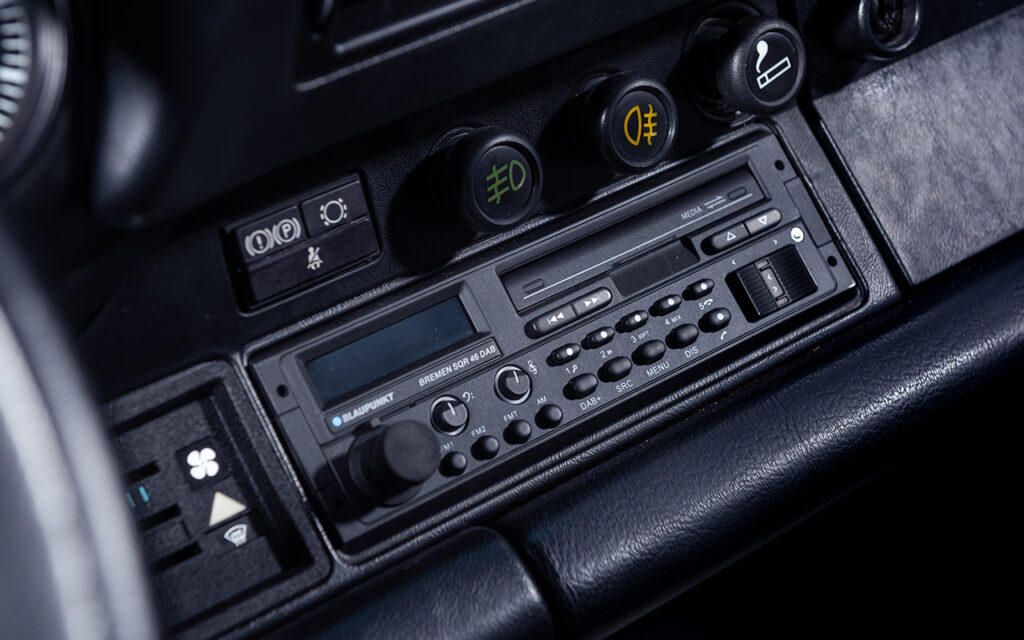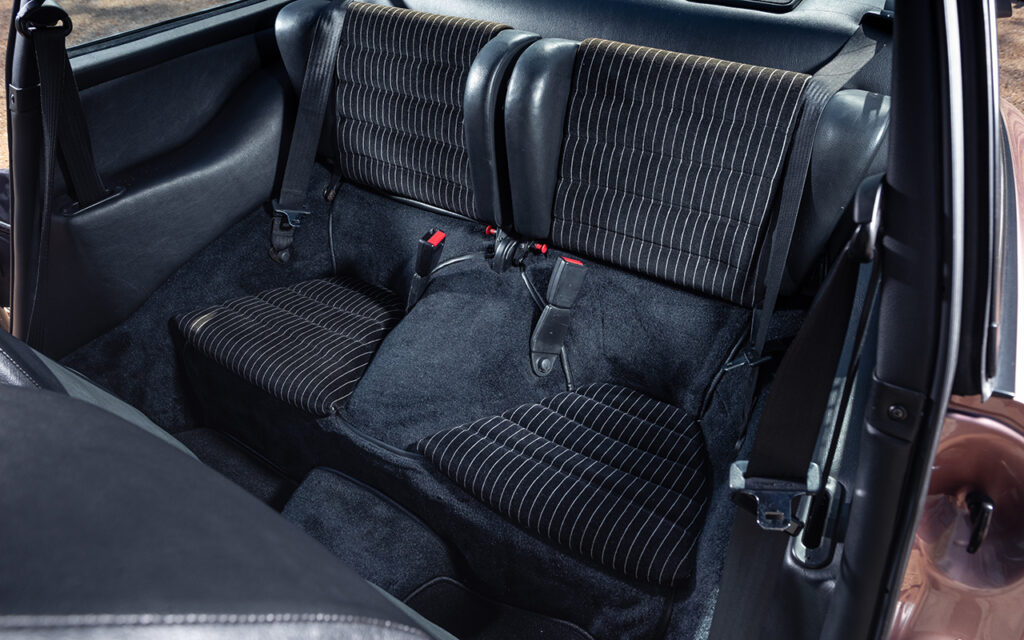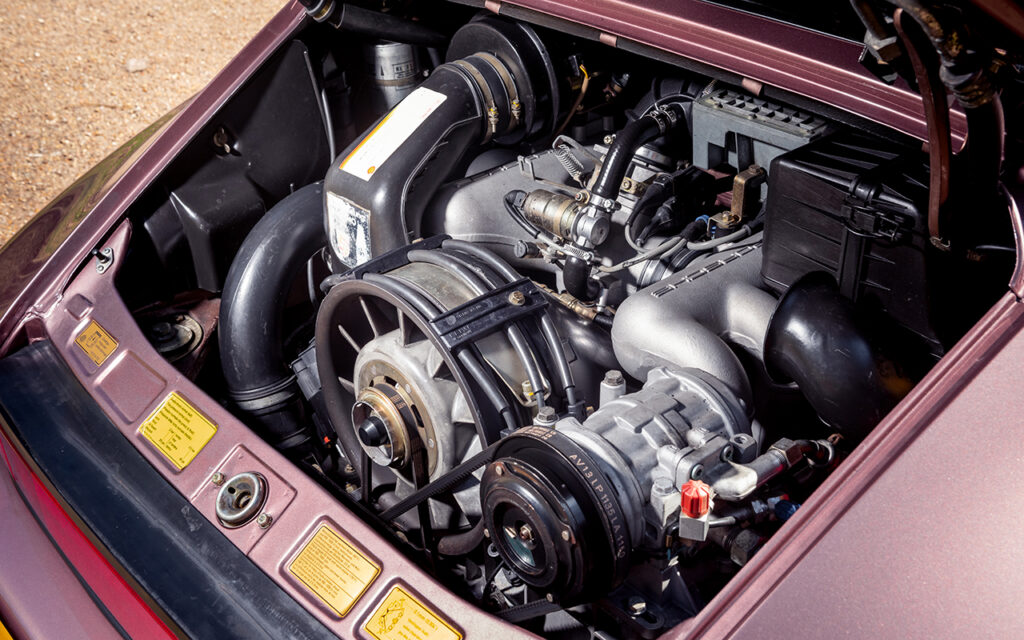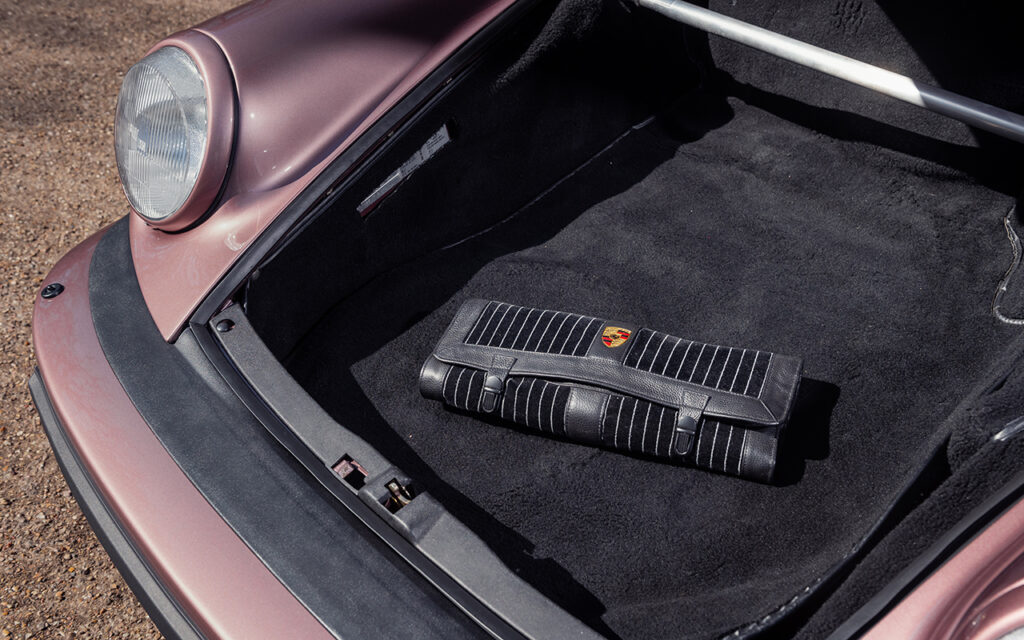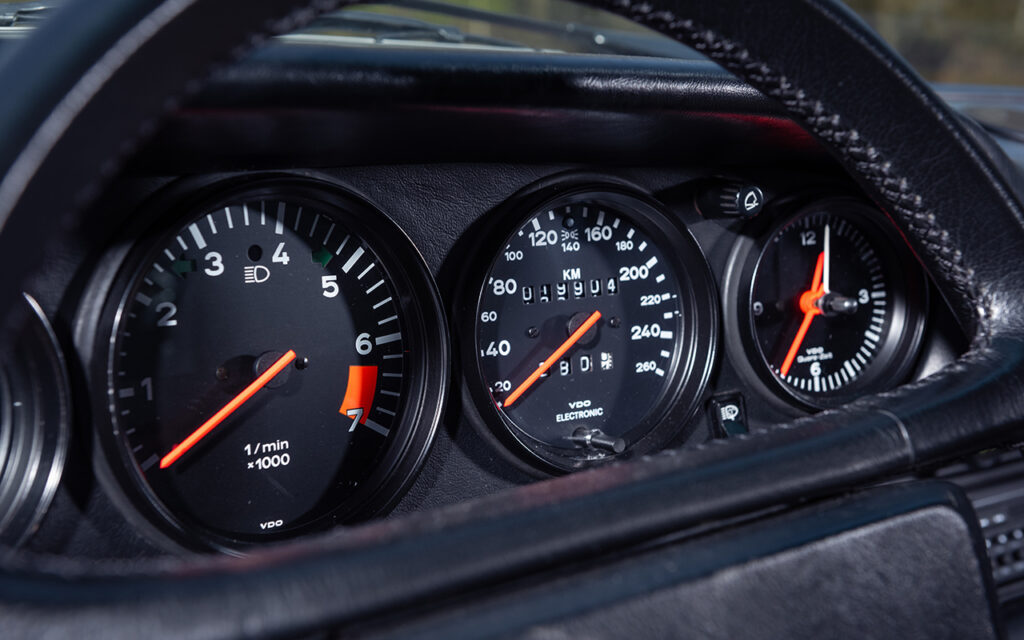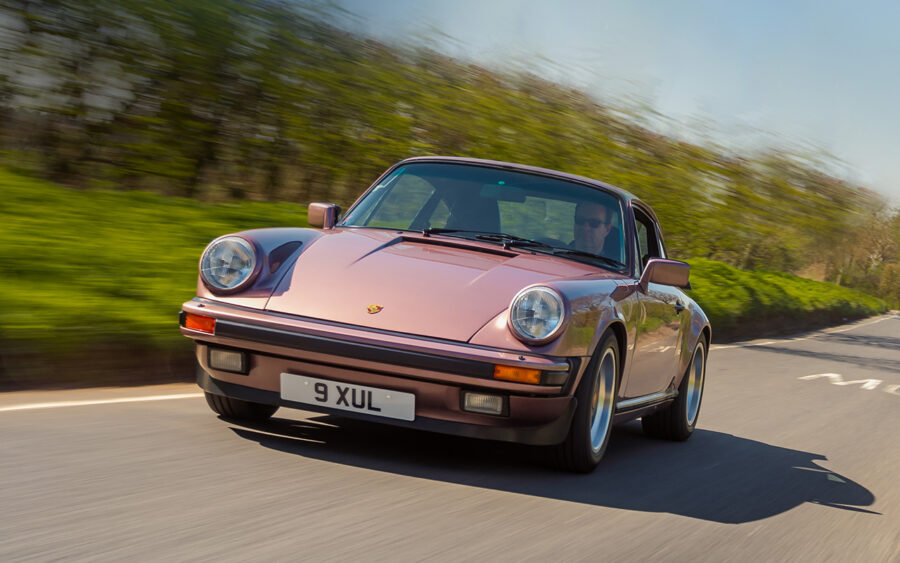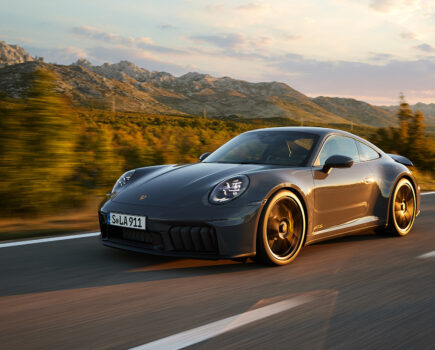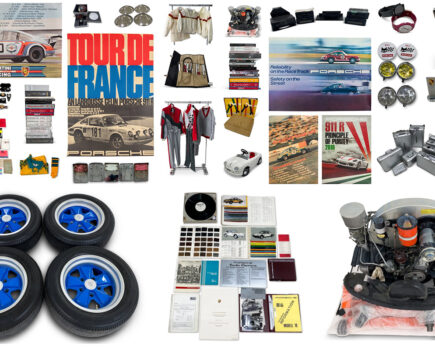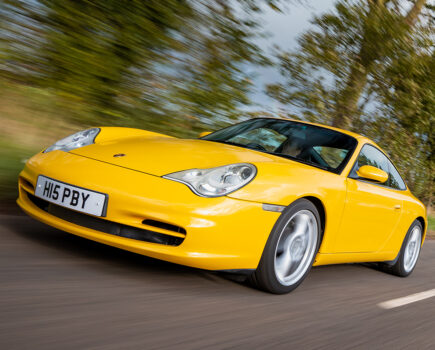We drive a Porsche 911 Carrera 3.2 that’s covered circa 500k miles in little more than three decades
Words: Johnny Tipler
I thought my old 964 was doing well at 375,000km. It’d been around the block, or so I reckoned, but on the grand scale of high-milers, that figure is nothing when compared to Steven Pidding’s Carrera 3.2, which is well on its way to half a million miles.
How come? Blame the high score on the car’s original owner, a businessman by the name of Phillippe Lathuille. Based in south-eastern France, he averaged about 10,000km every month – yep, every month – being constantly on the move, travelling across continental Europe to visit his various far-flung business interests, before zoom calls and emails made an anachronism of such a lifestyle.
Blame is too harsh a word, obviously, because, let’s face it, one can only envy someone who gets that much seat time in their 911 and can justify it (and, indeed, finance it) as a business expense. What does it tell us about Carrera 3.2s? Not only that they were – arguably still are – brilliant daily drivers, but they’re astonishingly well-made and supremely reliable. I can verify this, not least because my first 911 was also a Carrera 3.2, acquired in 2000 from Saltash-based Williams Crawford and owned for six years.
During that time, I used the car for the thirty-five-mile school run, ferrying two kids and a dog from Norwich to Leiston, there-and-back, twice a day. Back then, Mrs T and I owned a house in Portugal, and my Carrera 3.2 even covered that journey a time or two, suffering the indignity of a Thule top box! The car had racked up 140k miles by the time I swapped it for the Peppermint Pig at Roock Racing. Sure, that figure was a mere blip when compared with Monsieur Lathuille’s tally, but it does mean I can easily comprehend how someone with a need to travel vast distances on a daily basis would consider a 911 the only acceptable means of transport.
Let’s take a closer look at Steven’s car. He bought it from JZ Machtech in 2018, the Kings Langley-based marque specialist having acquired it from its second owner, an ex-pat Brit who’d imported the car to the UK from France. To go back to the beginning, this well-travelled Carrera 3.2 was ordered new in 1988, and was a factory-collected car, which implies a high degree of commitment – rather than wait for your local Porsche Centre to deliver your new 911, you can schedule a date to collect direct from Zuffenhausen. The fact this particular Porsche was specified in such an amazing colour is a big hint, too. Individual equipment included heated front seats, an uprated head unit (now replaced by a brilliant retro-look Bremen SQR 46 DAB), a rear wiper, air-conditioning and an engine tuned to accept unleaded fuel.
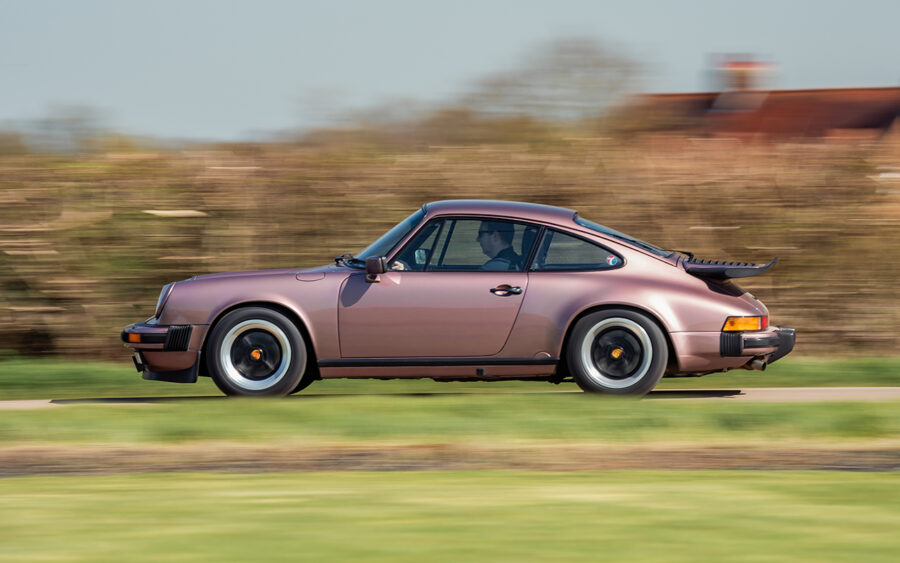
As for the colour, I do love a special hue, and this one is Cassis Red, which is, let’s face it, a sexy shade of pink. When I saw Steven’s 911, I distinctly felt a fresh wrap coming on for my current steed.
Lathuille lived in Fillinges, located in the French Haute-Savoie region, not far from Geneva. He managed businesses in Germany, France, Italy and Spain. In the throes of his trans-continental gallivanting, the 911 was looked after by Garage Baumet (aka Point Service Porsche Avignon) at Morières les Avignon. There, the car was treated to a full service every six weeks, including a completely new set of tyres fitted on every other visit. The fact this suburb of Avignon in the French Vaucluse department is almost 400km from Fillinges shouldn’t come as a surprise, given Lathuille’s penchant for being on the road. Other jobs were carried out by SAS Garage du Mont Blanc (Porsche Centre Grenoble), which makes more sense in the context of a home near Geneva, though it’s still as much as halfway to Avignon. Then again, when your general world view is so far-reaching, it’s probably not a big deal.
Ten thousand clicks a month, though. That’s really putting your air-cooled 911 through the mill, but, providing you look after it, clearly, it’s fine. Whilst I envy folk who can afford to keep a garage queen or three, my personal philosophy is that cars are for using, and I take my hat off to the owner who can clock up that much distance. The car’s service records reveal the odometer passed 62,000km (more than 38,500 miles) at ten years. Then, having eclipsed 100,000km (in excess of 62,000 miles), usage suddenly went up to 20,000km a month (almost 12,500 miles), which tells us Lathuille really started hitting high numbers from 2000. Quick maths suggest he averaged 240,000km (near 150,000 miles) a year. Never mind the fuel costs when dealing with a car delivering circa 25mpg – the receipts accompanying this Carrera 3.2 testify to 250 litres of oil, four batteries, two alternators and fifty-two tyres in the space of a decade. Which, I suppose, doesn’t sound overly excessive, all things considered.
Anyway, inevitably there came a moment when Monsieur Lathuille elected to buy another car, and so, in 2010, he sent his Carrera 3.2 (then in its twenty-second year) to living legend and Porsche tuning specialist, Manfred Freisinger, to have it restored. There was a suggestion Lathuille and Freisinger knew each other from school, but whatever their association, it was Freisinger who was commissioned to carry out the work. Having hung out in the leafy outskirts of Karlsruhe for a while, around nine years ago, I visited Freisinger’s premises a few times. I interviewed Manfred Jnr on two occasions — an illuminating experience in several ways.
The ground floor of his then new building was an Aladdin’s Cave of exotic classic Porsche race cars, many with top-line provenance, from 2.7-litre RSs to 993 GT2s, 924 Carrera GTRs and his 917 Spyder (917/10 006), which sat resplendent in his company’s foyer alongside his treasured 908. Having restored the 917 using NOS parts, he races the car in historics. The 908 was driven by Vic Elford and Brian Redman in the 1969 24 Hours of Daytona. Freisinger has an encyclopaedic knowledge of Porsche competition history, and as a race car dealer and restorer, parts specialist, team principal and racing driver, in three decades, he’s cornered the market in rare Porsche racing componentry. He also boasted of having thirty-five restorations ongoing at any one time, completing ten cars each year.
So, despite its gorgeous colour, Lathuille’s 3.2 would have been a relatively prosaic candidate among the majority of gob-smacking stuff rolling in and out of Freisinger’s workshop doors – I witnessed the 935/78 Moby Dick, a 906, a 904/6 and four 934s when I was in attendance back in 2012. Nevertheless, Lathuille was offered a set of brand-new barrels and pistons to take the 3.2’s capacity up to 3.4-litres, which he gladly accepted. Freisinger also installed new pinstripe-upholstered Sports seats and cabin interior, new Fuchs wheels, torsion bars, trailing arms, calipers, backplates, heater boxes and a new exhaust system. The works, in fact. Steven believes the restoration and engine rebuild cost at least €150,000. Once again, we’re taking big numbers with this car! And though that spend is par for the course today, we’re talking ten years ago: Freisinger takes no prisoners.
Post-restoration, Lathuille seems to have pensioned off his air-cooled 911 until 2015, when it was purchased by the aforementioned ex-pat Brit, who brought it to the UK and ran it every now and then, before deciding to trade up at JZM. And so begins Steven’s time with the car. “I paid more than you would recommend for a regular Carrera 3.2,” he says, “but Russ Rosenthal at JZM showed me all the car’s documentation and I immediately loved the background story. I simply had to have this Porsche!” Steven intends to use his pretty pink 911 as much as possible, though probably not to the extent of Monsieur Lathuille!
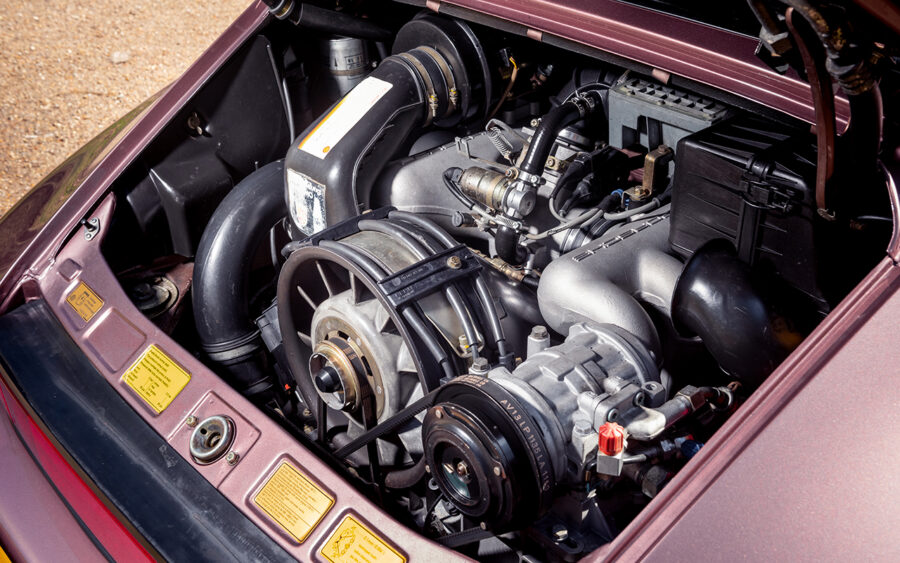
Porsche 911 3.2 Carrera: on the the road
Let’s refresh our memories regarding Carrera 3.2 history. The model was introduced in late 1983 for the 1984 model year. It replaced the three-litre 911 SC, employing the same body-chassis unit with a few detail improvements. Like the SC, the Carrera 3.2 was offered with Coupé and Targa body styles, plus Cabriolet, Club Sport and Speedster variants. A major alteration to specification came in 1987 with the introduction of the stronger G50 gearbox in place of the more delicate 915 unit. Our 1988 Cassis Red 3.2 features a G50.
In 1987, the mechanical cable clutch was also superseded, replaced with a hydraulic clutch. These cars are extremely robust — slightly better and sturdier than the SC, and even the follow-on 964. There’s a no-nonsense solidity to the 3.2. Bodyshells were made entirely of hot-dip galvanized steel, one of the reasons they endure so well. The 5mph impact bumpers absorbed minor traffic mishaps, sliding backwards against collapsible steel tubes in European-spec cars and hydraulic rams on US cars.
The 911 Carrera 3.2 driving experience – or, in this case, Carrera 3.4 – is an encounter all of its own. Obviously, it’s not that far removed from the impact-bumper 2.7, Carrera 3.0 or SC, but the 3.2 is a more solid proposition, and it feels it. There’s no question that Porsches of this era (and the 3.2 in particular) were built to last.
With its torsion bar suspension, it’s also quite different to the later 964 that, which comes with coil-sprung suspension and power-assisted steering. This means, with the Carrera 3.2, a certain amount of muscle power is needed. And those floor-hinged pedals; your right heel may be on the deck as you pressure the throttle, but your left foot will be dancing in mid-air, dealing with the heavy clutch and un-servo’d braking system. On the move, all your senses come into play. The absence of power steering has an upside because everything is full-on and sensitive. Feedback is instantaneous: you feel exactly what the suspension is doing and where the car is going, so your own reactions are honed to match.
Left or right-hooker, all 3.2s are hugely involving, nowhere more so than twisty back roads. Put it this way, on an indifferently surfaced B-road, the front wheels bubble over every undulation as they feel out the topography; it’s alive, a creature working out which passage to take for best effect, and you’re controlling it by light movements of the wheel as it bucks slightly in your hands with each and every passing bump. The faster you go, the steering progressively loads up and the more physically demanding — and rewarding — the drive becomes.
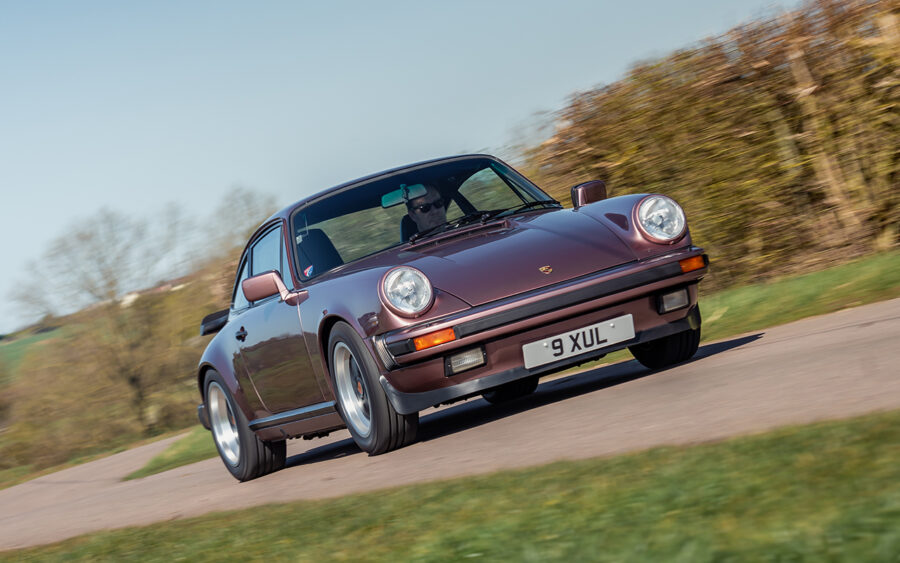
The 911 Carrera 3.2 is rated at a respectable 237bhp at 5,900rpm and 284Nm torque at 4,800rpm. The model offers relatively long gearing, both in 915 and G50 formats, which matches with the slow and methodical nature of the gearshift; you go from one slot to another quite deliberately – you can’t just whack it through the gate. It’s not ponderous, because you have to be meticulous about where you move the lever. Shift a 915 from fifth to fourth, and you have to be calculated about your movement, else you quickly graunch into reverse. A G50 is less sensitive, but still demands precise shifting.
Put your foot down in fifth, and you can be sure the 3.2-litre flat-six will deliver the power, although it’s not devastating. Better drop a cog in an overtaking situation to be safe. Equally, you notice how strongly the 3.2 pulls when you approach the legal limit – between 4,000rpm and 6,000rpm, this thing really delivers. Third gear overtaking on A-roads is stunningly fast, accompanied by the raucous boxer bellowing as the revs scream towards 6,000rpm. The power builds relentlessly until you run out of road or become a fixture of a slowcoach’s rear-view mirror. Conversely, the 3.2-litre lump is admirably torquey and will pull inexorably from 1,500rpm in top.
As for rallentando, you need to get your braking done first, ideally trail-braking up to a corner, although the brakes are so powerful that an occasional stab will remove speed if you are travelling a tad too fast approaching a bend. You drive the Carrera 3.2 through the corners – apply the lock early, steer it through, lock off, perhaps a bit of oversteer induced with the wheel, but most likely by use of the throttle – foot off to make the front-end tuck in, or foot on to drift out. On back roads, you can drive the 3.2 by the seat of your pants: attacking rather than defensive, positive rather than passive. This is very much a usable classic and, back when I had one, I favoured the ride of tyres with tall walls, rather than low-profiles.
Point to point a Carrera 3.2 may not be the quickest car, but it’s fun and rewarding to own and drive. This air-cooled 911 is no more expensive to run and maintain than a ten-year-old family repmobile, and the only impediment to ownership today is the cost of buying one. To put that claim into perspective, twenty-one years ago, my Carrera 3.2 set me back ten grand.
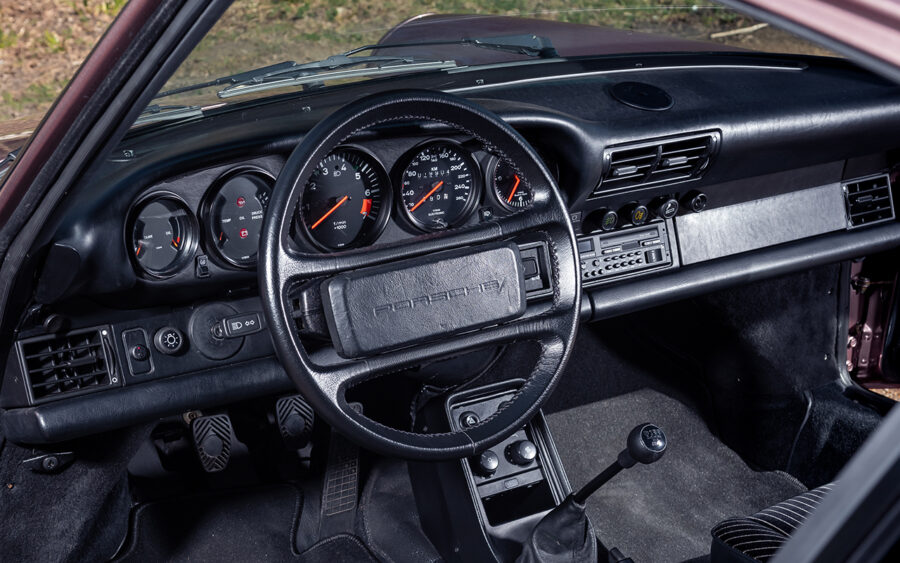
Obviously, Steven’s high-miler is a left-hooker. I can identify – both my air-cooled 911s were left-hand drive. Travelling on UK roads from the ‘passenger seat’ doesn’t faze him, though I must admit my own record on that score is far from unblemished: driving a stretch of country lane I thought I knew well, I eased out to overtake, only to make contact with a big Vauxhall saloon coming the opposite way. Both wing mirrors were sliced off, and the GM product’s right front wheel promptly adopted a different angle to its neighbour. Subsequently, I discovered the Griffin was a write-off. The 911? A scraped front fender and little else, proving this is indeed a tough car. Sure, in a left-hand-drive vehicle you have certain advantages (like being able to see up the inside of whatever’s in front of you), but really, hanging back is the only way to ensure safe overtaking moves. Of course, when you take such a vehicle across the Channel and hit the roads of Continental Europe, everything is perfect.
The other asset of a left-hand drive classic 911 is the pedal layout: the orientation has the pedals directly ahead of the driving seat, enabling straight-legged access, as opposed to right-hand drive 911s, where the pedals are set slightly off to the left because of the bulge of the offside front wheel well. As for interior space in general, Steven finds the 3.2 more roomy than the 993 he previously owned, even though, in terms of dimensions, there isn’t a lot in it. That said, Porsche packed a lot more tech (power steering, airbags and a padded dashboard) into the 993. He’s well over six-foot tall, and although the 993 offered plenty of headroom, he felt the cabin was quite cramped.
The 3.2, so he tells us, just feels roomier. My opinion? Well, I used to pack an entire drum kit in my Carrera 3.2, the bass drum on the passenger seat and toms in the back – possibly burying an uncomplaining child.
Steven recently handed his air-cooled 911 to London-located automotive care company, Topaz Detailing, with an instruction for light cosmetic restoration (a response to a decade passing since Freisinger’s work). Topaz kept hold of the car for about six months, during which time the firm’s technicians applied full paint protection treatment. Keep on top of stuff like that, and your 3.2 will go on indefinitely. Talking of which, JAZ Porsche in nearby St Albans is charged with taking care of maintenance work and Steven has two sets of wheels and tyres for the car, making use of Michelin Pilot Sport Cups for summer and Pirelli Sottozero Winter 240s in the wintertime. He also changes all fuses every two years as a matter of course.
And how about the extra 200cc? He doesn’t detect any difference. “Let’s be honest,” he says, “the jump from 3.2-litres to 3.4-litres isn’t a great deal, and though the car is a little more responsive, it’s pretty much behaves the same as a standard Carrera 3.2. The increase in displacement certainly doesn’t affect the engine note or the noise coming from the rear,” he reveals.
Overseas travel restrictions permitting, he’s planning a trip to the Austrian lakes this summer. That’ll add another couple of thou to the mileage, but by now, nobody will be very surprised. As the saying goes, to infinity… and beyond!
